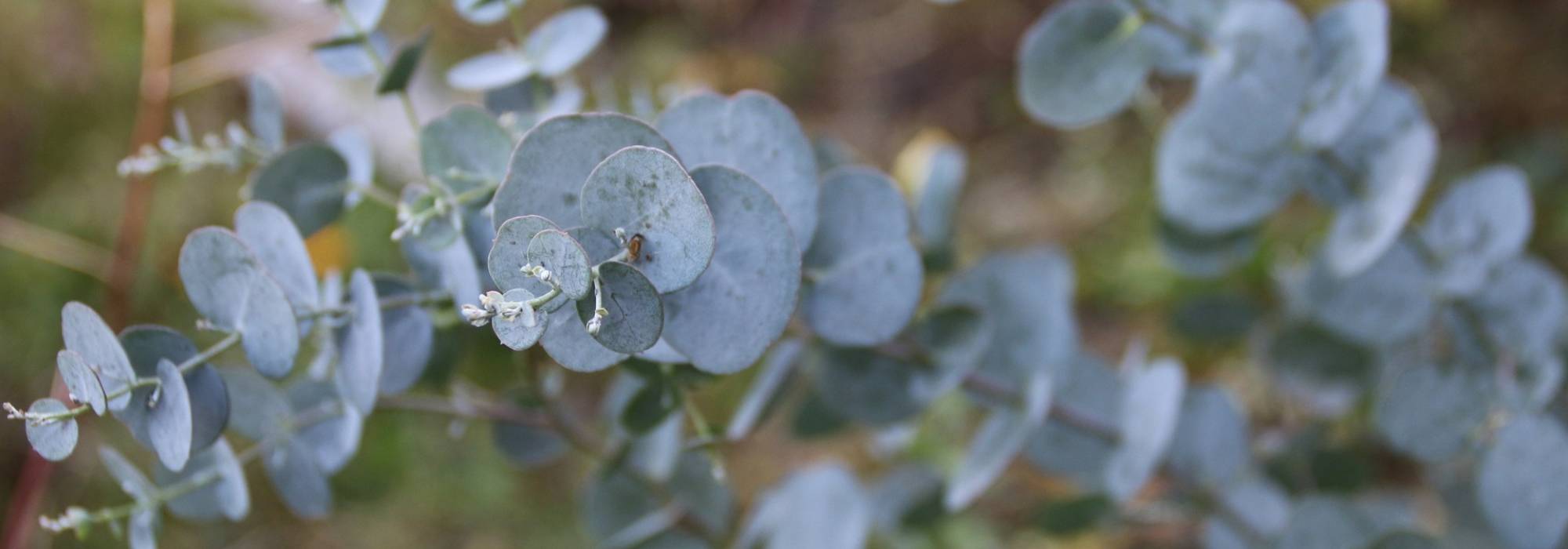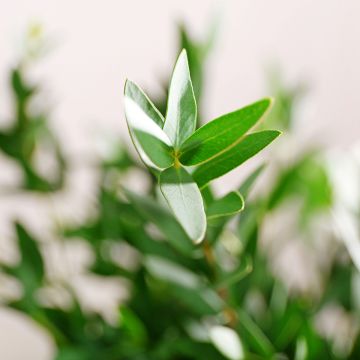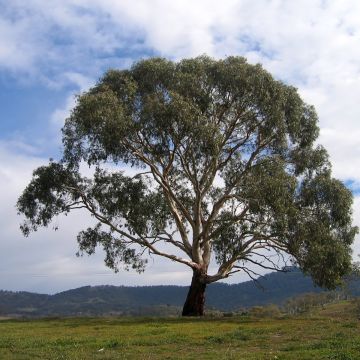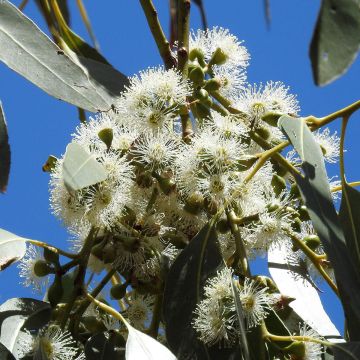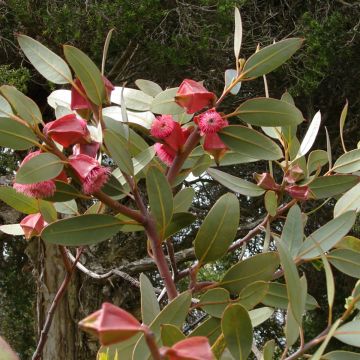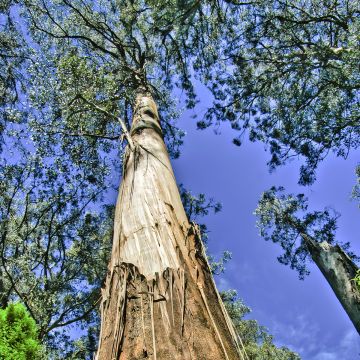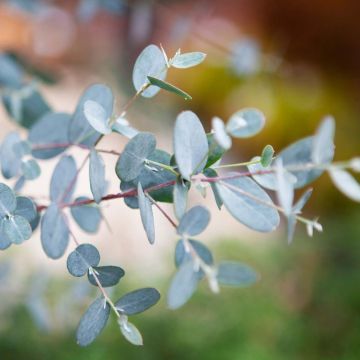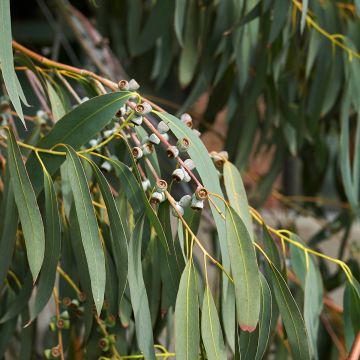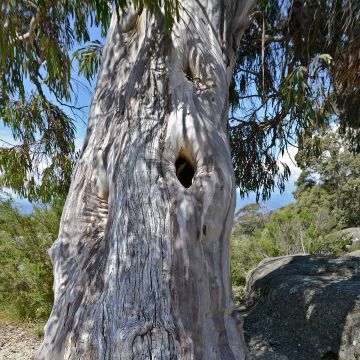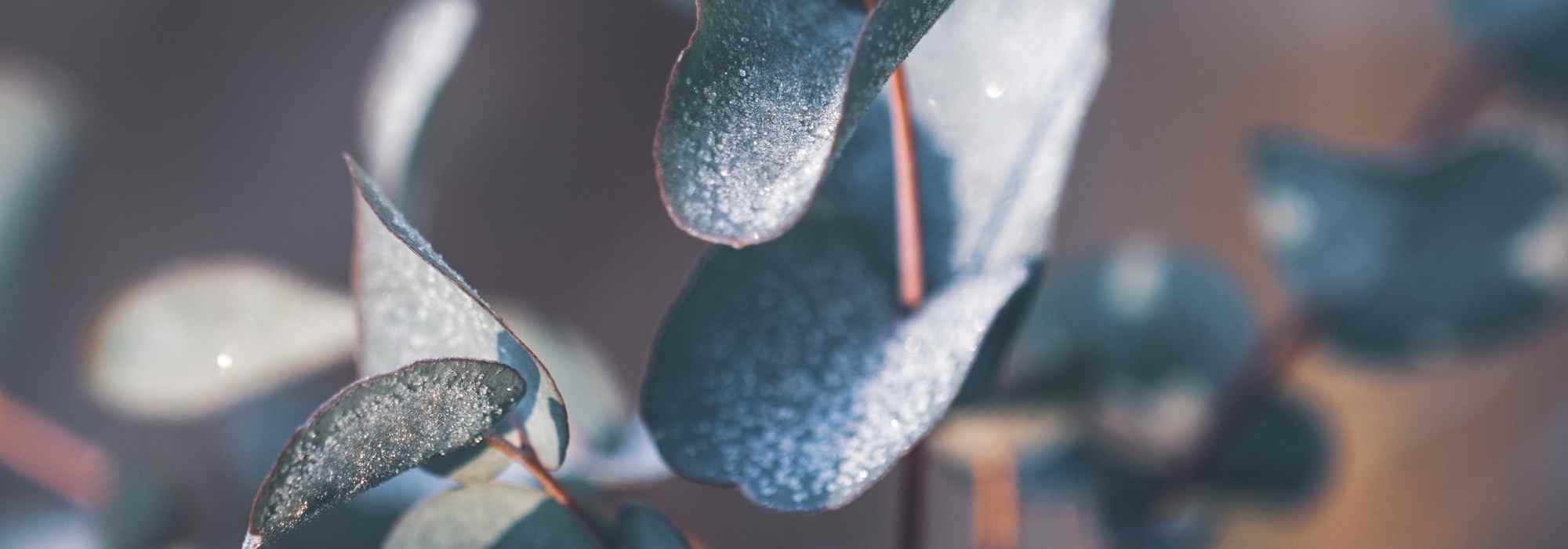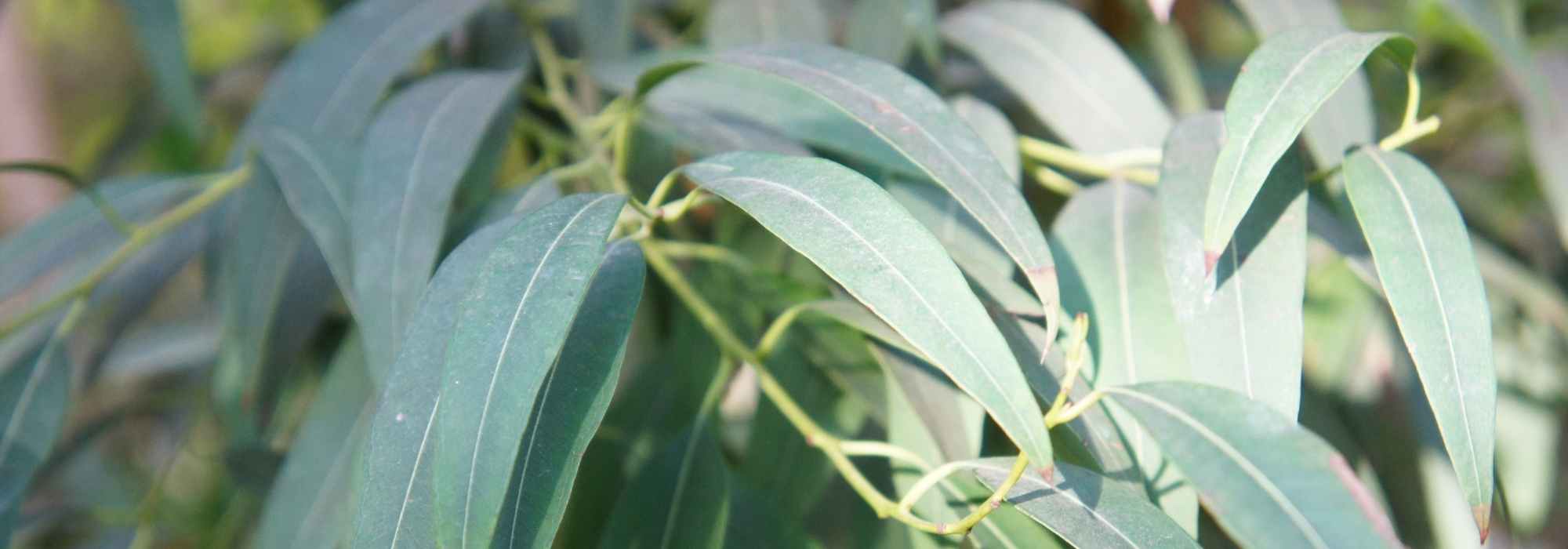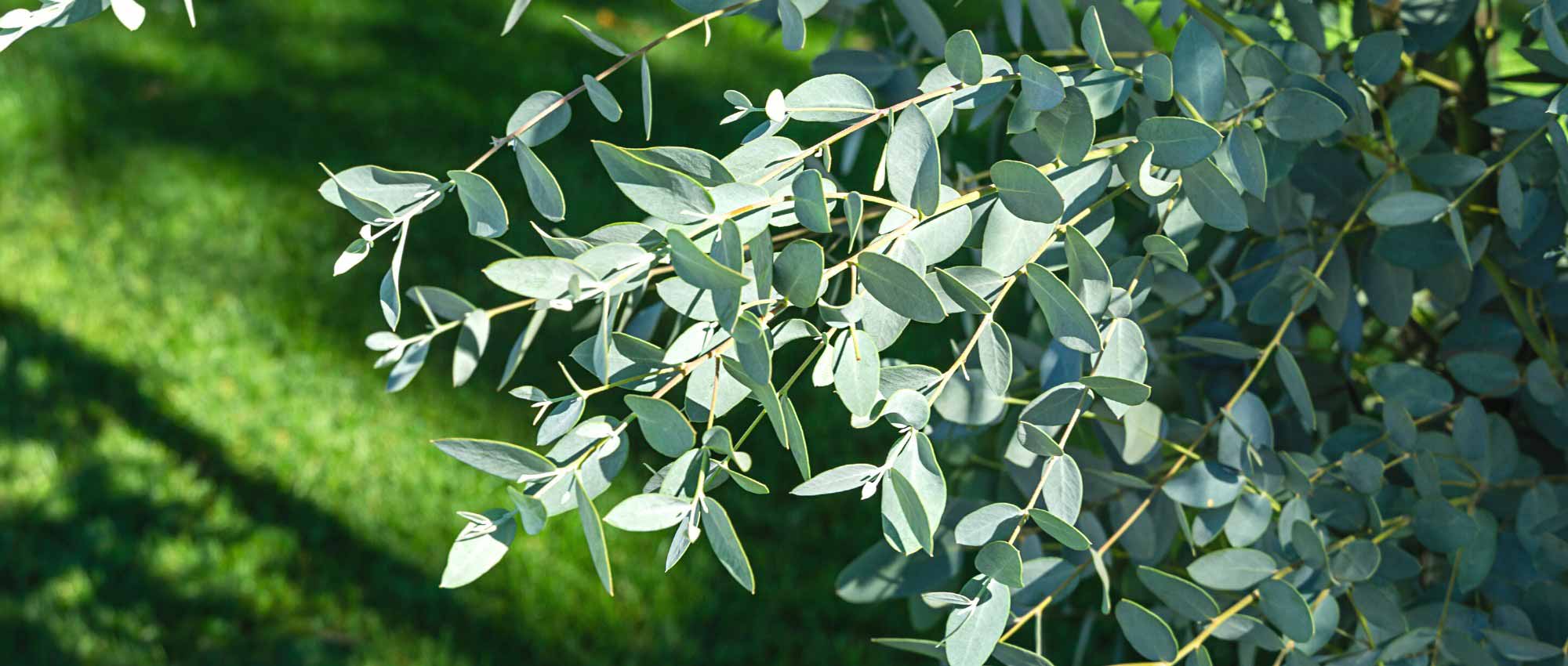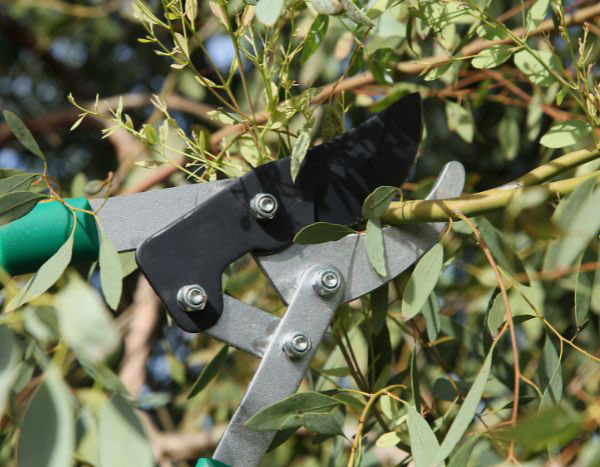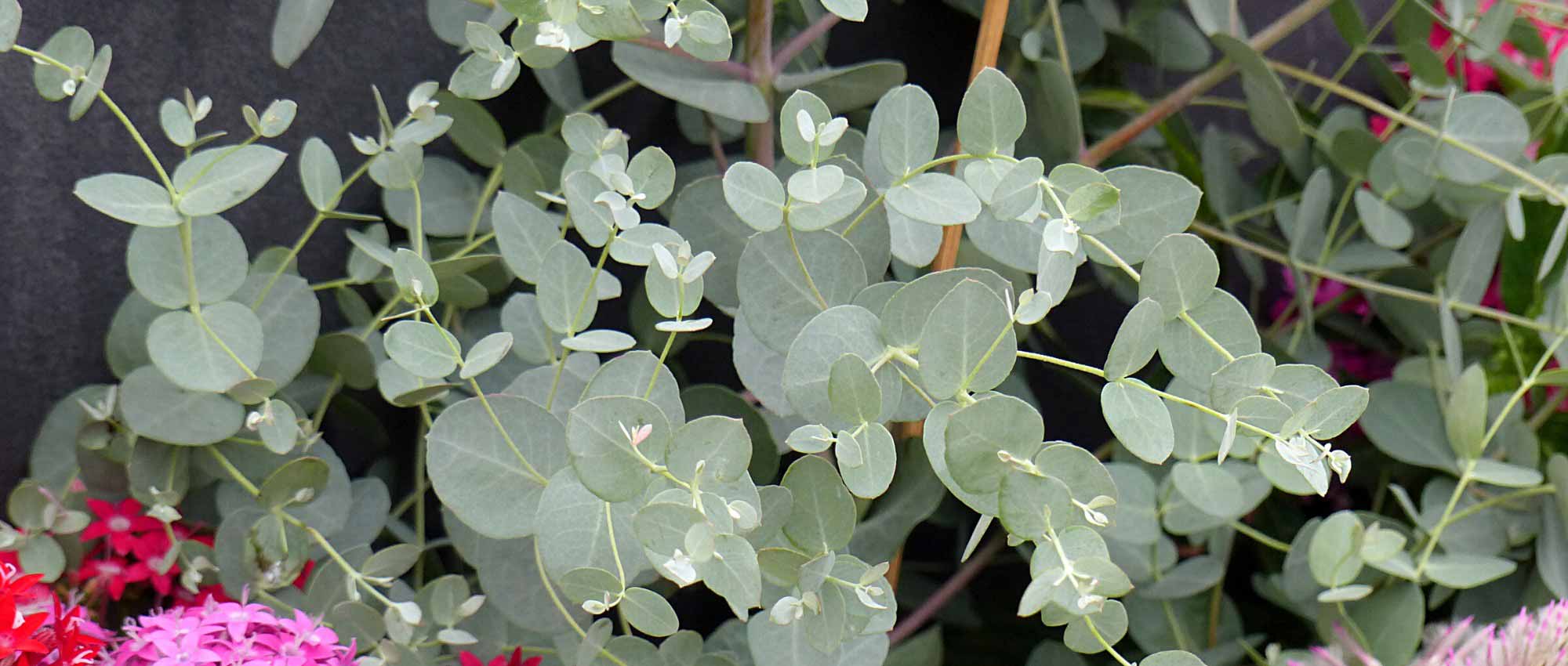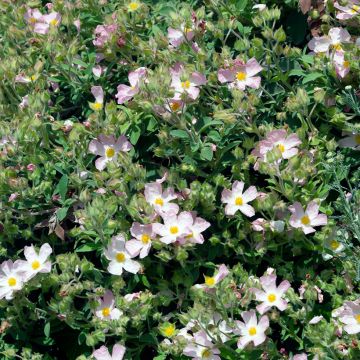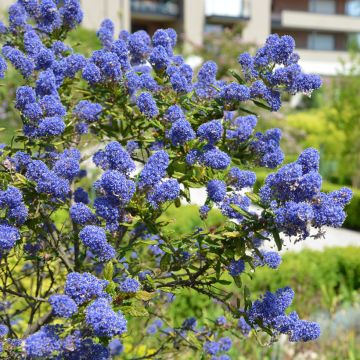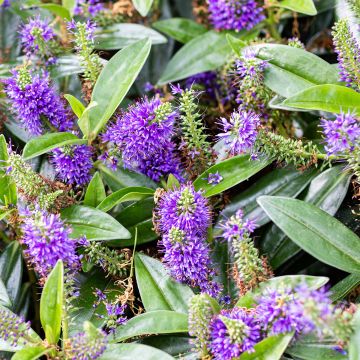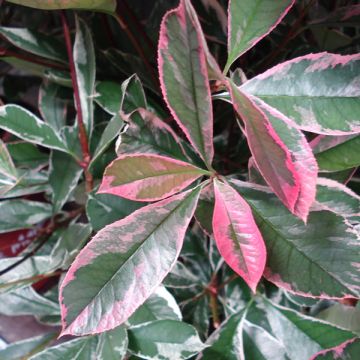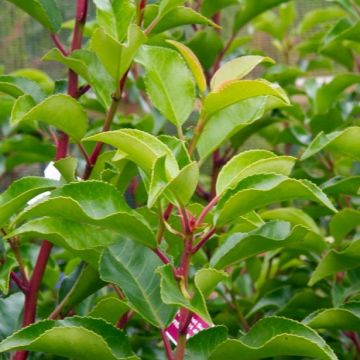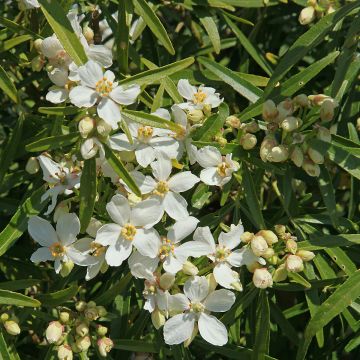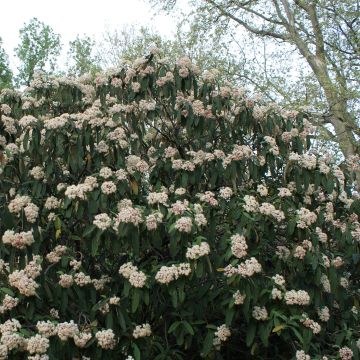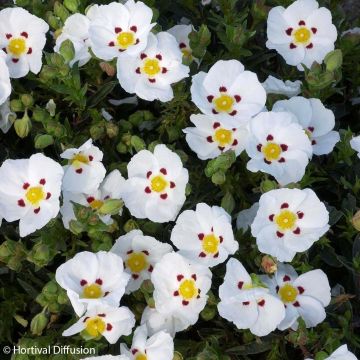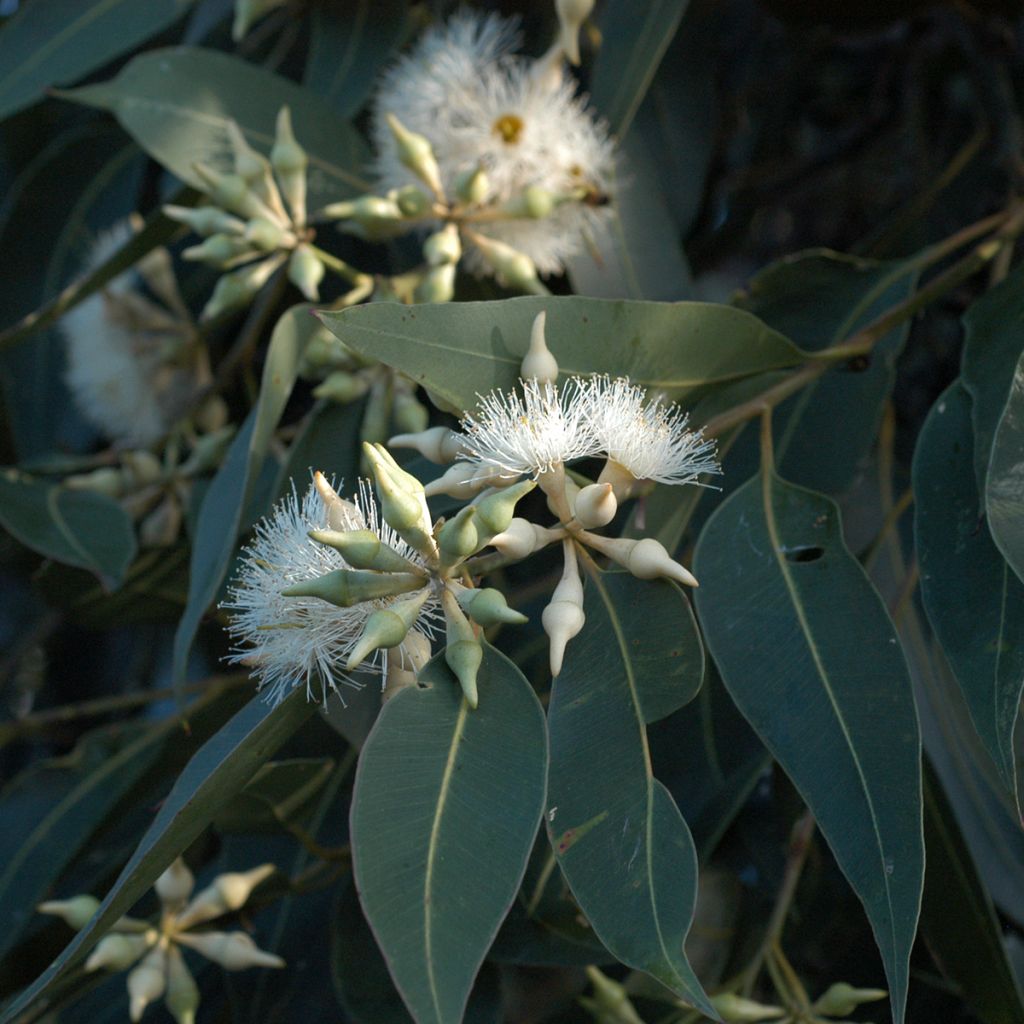

Eucalyptus robusta
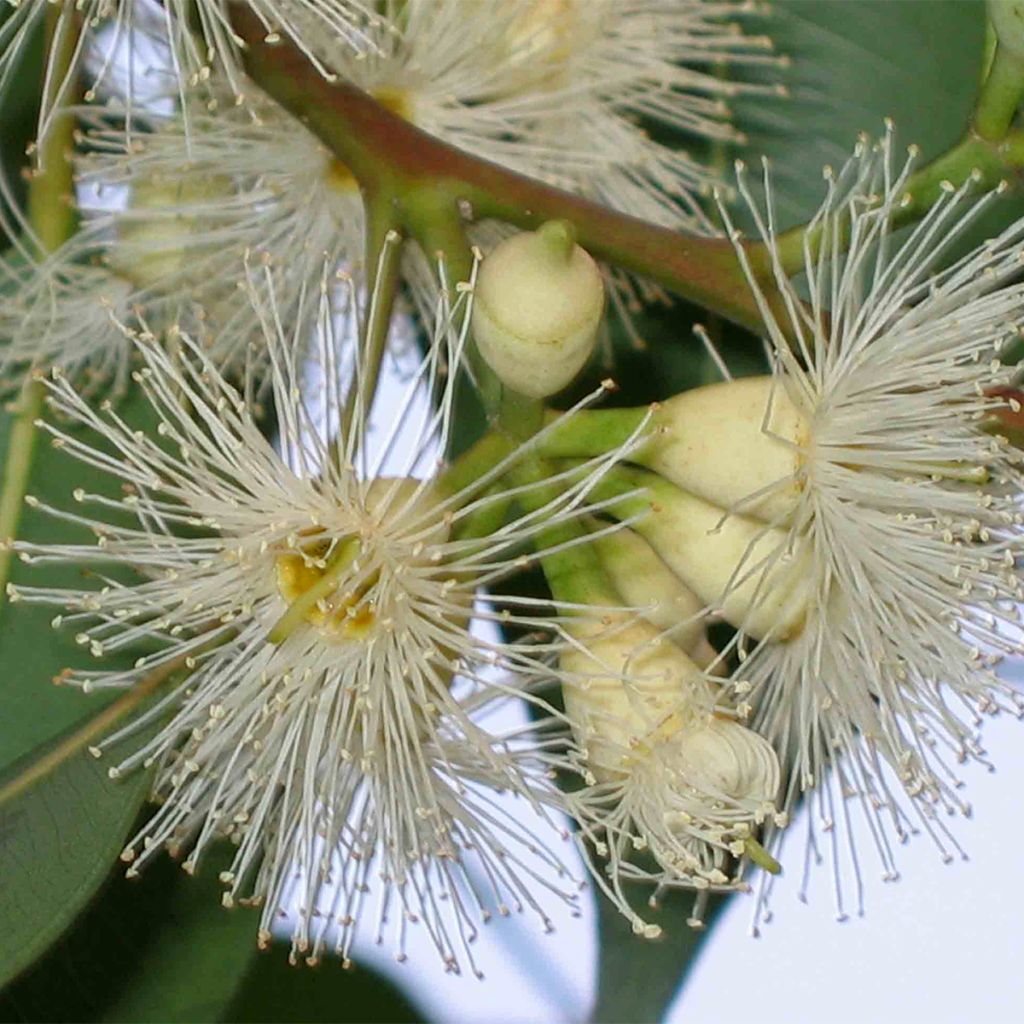

Eucalyptus robusta


Eucalyptus robusta
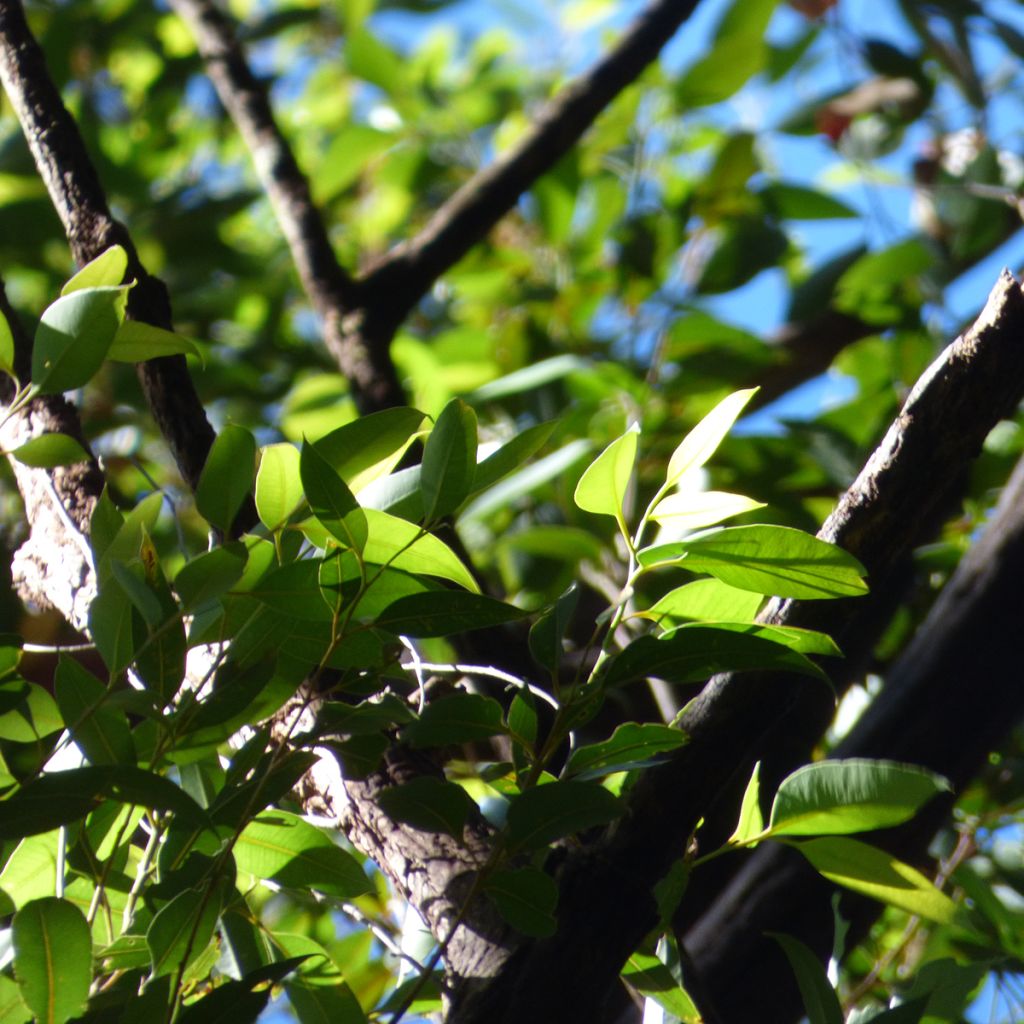

Eucalyptus robusta
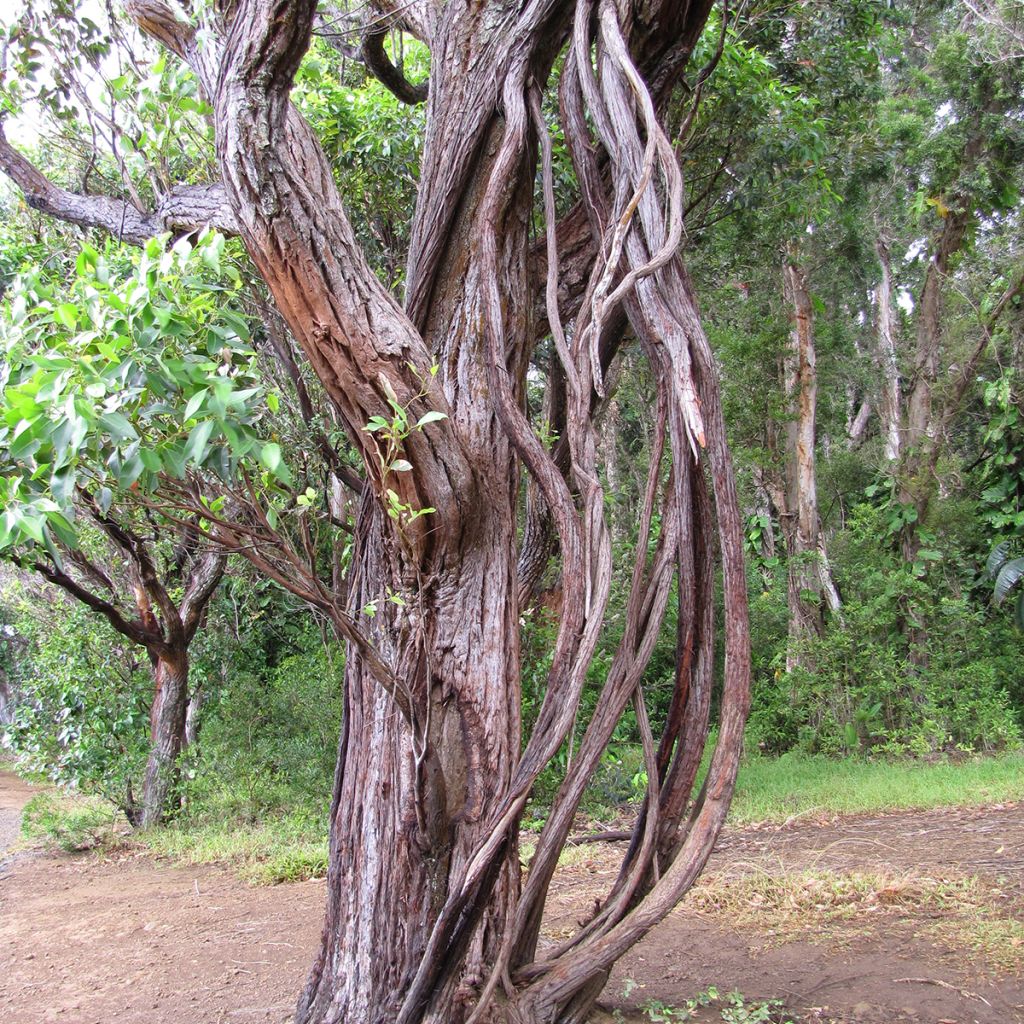

Eucalyptus robusta
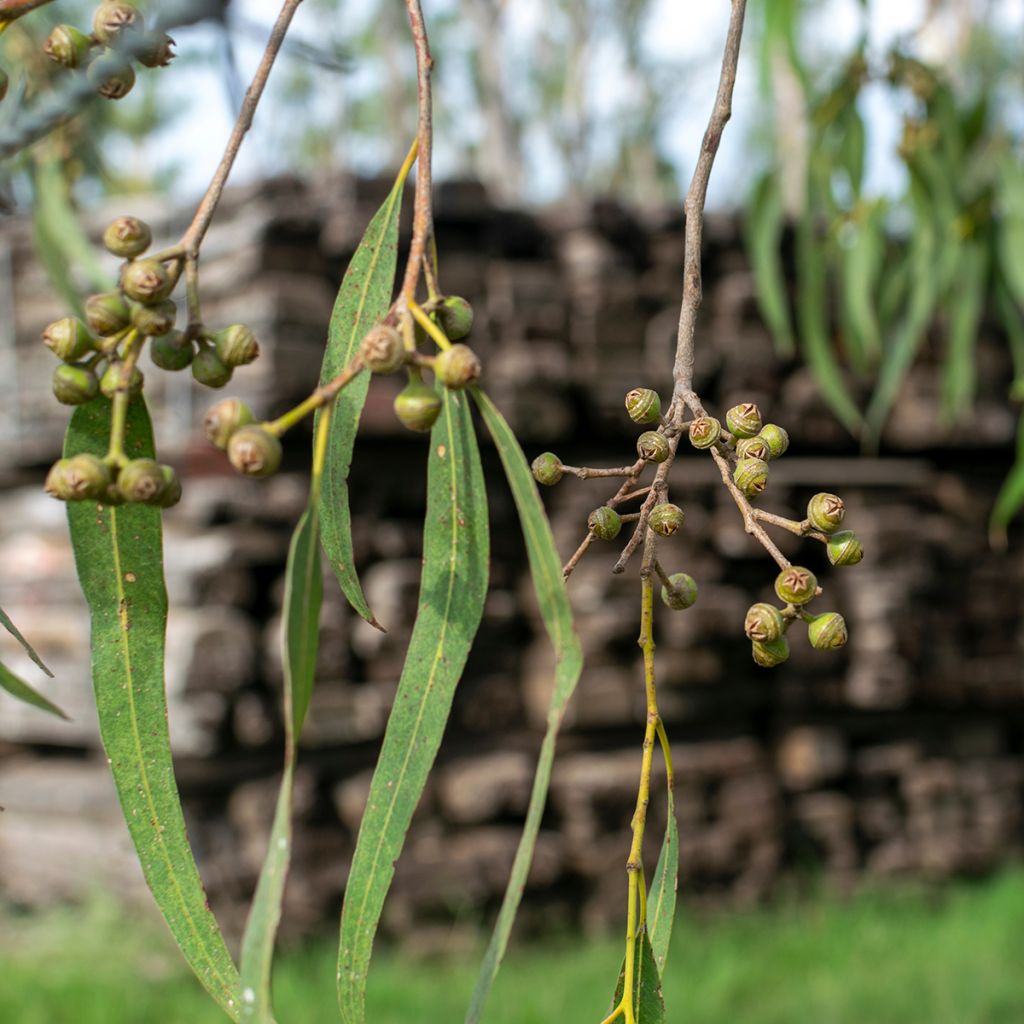

Eucalyptus robusta
Eucalyptus robusta
Eucalyptus robusta
white mahogany
Special offer!
Receive a €20 voucher for any order over €90 (excluding delivery costs, credit notes, and plastic-free options)!
1- Add your favorite plants to your cart.
2- Once you have reached €90, confirm your order (you can even choose the delivery date!).
3- As soon as your order is shipped, you will receive an email containing your voucher code, valid for 3 months (90 days).
Your voucher is unique and can only be used once, for any order with a minimum value of €20, excluding delivery costs.
Can be combined with other current offers, non-divisible and non-refundable.
Home or relay delivery (depending on size and destination)
Schedule delivery date,
and select date in basket
This plant carries a 24 months recovery warranty
More information
We guarantee the quality of our plants for a full growing cycle, and will replace at our expense any plant that fails to recover under normal climatic and planting conditions.
Would this plant suit my garden?
Set up your Plantfit profile →
Description
Eucalyptus robusta, known as the White Mahogany Eucalyptus, is a tropical species originating from a coastal strip in southeastern Australia. It grows rapidly and thrives in humid soils and mild climates, forming a tree that reaches about thirty metres in height. Well adapted to coastal areas, it withstands salt spray and tolerates slightly salty soils. Its evergreen foliage is dark green, aromatic to the touch, and its cream-white flowering is not without interest. However, the brown and fissured bark is rather unattractive. Difficult to acclimate, this rare species will mainly interest collectors of the genus.
Eucalyptus robusta belongs to the large Myrtaceae family, which includes more than 130 genera, including Callistemon (bottlebrush), Feijoa, Guava (Psidium), and of course Myrtle. Among the 800 species in the Eucalyptus genus, only about ten are native to Southeast Asia, while all others come from Australia. E. robusta is derived from a coastal strip that extends from southern Queensland to southern New South Wales, in tropical and low-altitude regions. It is a tree that loves the sun and humidity, accustomed to rainfall of 1000 to 2000 mm (39.4 to 78.7 in) per year. It grows in wet to waterlogged soils, hence its common name Swamp Mahogany which it owes to its reddish wood. It also tolerates slightly salty soils as well as wind and salt spray, conditions to which it is accustomed.
It is a fast-growing tree of medium to large size, generally reaching 25 to 30 m (82 to 98 ft 5 in) in height, but can reach up to 55 m (180 ft 5 in) (especially in Hawaii). The trunk is straight, measuring up to 1.20 m (3 ft 11 in) in diameter, and the brown bark is thick (2 to 4 cm (0.8 to 1.6 in)), fibrous, and fissured. In very humid climates, aerial roots can form from the trunk, up to 6 m (19 ft 8 in) above ground level. In open environments, it has a fairly wide habit, forming a crown with long, spreading branches, often brittle. When used in dense plantations, the branches are more upright and the tree narrower due to surrounding competition.
The evergreen foliage is alternate, with lanceolate petiolate leaves, 10 cm (3.9 in) long by 3 to 7 cm (1.2 to 2.8 in) wide for juvenile foliage, and 10 to 18 cm (3.9 to 7.1 in) long by 4 to 8 cm (1.6 to 3.1 in) wide for adult leaves. Dark green on the upper side, it is lighter on the underside and releases a spicy aromatic odour when crushed (due to the presence of numerous glands containing essential oils).
Flowering occurs from May to July in Australia, so in autumn and winter in the northern hemisphere. The flowers form pompom-like clusters about 3 cm (1.2 in) in diameter and cream-white in colour. Typical of Myrtaceae, it is mainly the stamens that are admired, with the flowers grouped in axillary umbels of 5 to 15. They are quite ornamental and nectar-rich. They then evolve into dark green cylindrical fruits that contain numerous seeds and often persist on the tree for two years.
Eucalyptus robusta grows in neutral to strongly acidic, clayey, and heavy soils, or even sandy-clayey soils. It appreciates very humid soils and can withstand temporary flooding. Although native to tropical areas, it can also grow in temperate climates and will tolerate brief frosts of around -2°C (28.4 °F) to -4°C when well established. Used as timber, it has been planted in many countries on different continents: Argentina, Brazil, Congo, Madagascar, China, Philippines, etc.
This Eucalyptus could be tried in the mildest areas of the Mediterranean coast, where it should withstand mild winters but may lack the humidity to develop well. The proximity of a water source or stream will then be welcome to help with its establishment. It will bring a touch of exoticism, combined with other characteristic plants such as the Dicksonia antarctica, a tree fern with magnificent foliage carried by a dark brown fibrous stipe. A beautiful palm tree with a tropical appearance like Archontophoenix cunninghamiana will also be a perfect companion, while a few plants of Hedychium, or Ornamental Ginger, with their long floral spikes will complete this scene.
Eucalyptus robusta in pictures
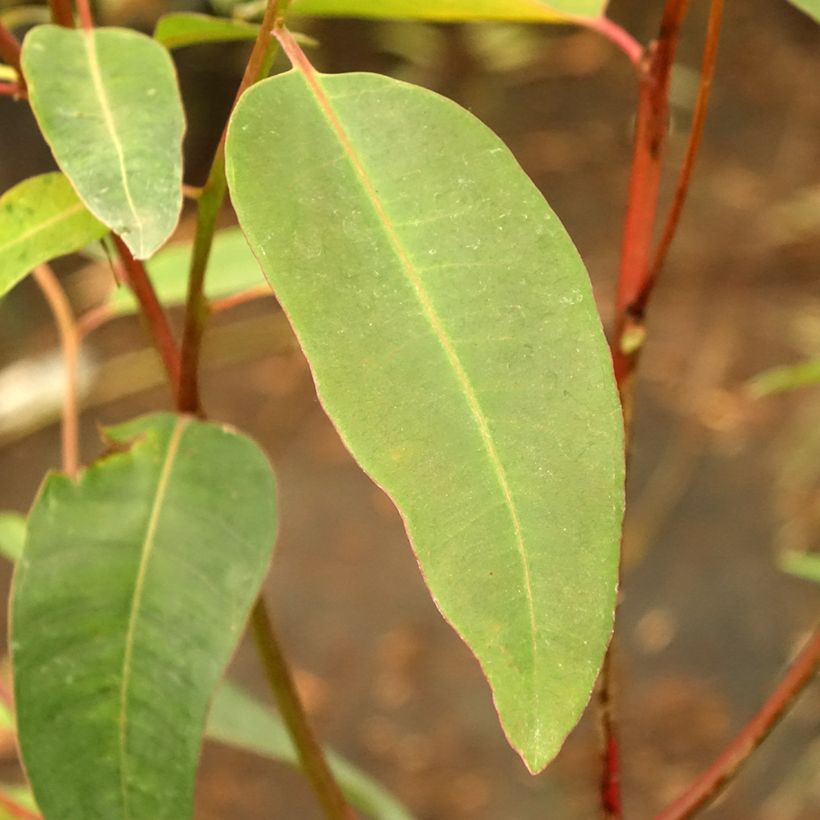

Plant habit
Flowering
Foliage
Botanical data
Eucalyptus
robusta
Myrtaceae
white mahogany
Australia
Other Eucalyptus
View all →Planting and care
Eucalyptus robusta is best suited to the mildest areas, as it is sensitive to frost. It requires an acidic soil (it even tolerates very acidic soils) to neutral, quite moist, so it will be necessary to water it abundantly. It is known to tolerate slightly salty soils as well as sea spray, which is well suited to coastal planting, where the risk of frost is lowest. In fact, once established, it can briefly withstand a few degrees below 0°C (32 °F).
It withstands wind well, but much less so dry conditions, as in its original regions, it is a plant that is found in damp or even marshy areas. Consequently, it will need to be watered very regularly after planting and do not allow the soil to dry out.
Planting period
Intended location
Care
Planting & care advice
This item has not been reviewed yet - be the first to leave a review about it.
Similar products
Haven't found what you were looking for?
Hardiness is the lowest winter temperature a plant can endure without suffering serious damage or even dying. However, hardiness is affected by location (a sheltered area, such as a patio), protection (winter cover) and soil type (hardiness is improved by well-drained soil).

Photo Sharing Terms & Conditions
In order to encourage gardeners to interact and share their experiences, Promesse de fleurs offers various media enabling content to be uploaded onto its Site - in particular via the ‘Photo sharing’ module.
The User agrees to refrain from:
- Posting any content that is illegal, prejudicial, insulting, racist, inciteful to hatred, revisionist, contrary to public decency, that infringes on privacy or on the privacy rights of third parties, in particular the publicity rights of persons and goods, intellectual property rights, or the right to privacy.
- Submitting content on behalf of a third party;
- Impersonate the identity of a third party and/or publish any personal information about a third party;
In general, the User undertakes to refrain from any unethical behaviour.
All Content (in particular text, comments, files, images, photos, videos, creative works, etc.), which may be subject to property or intellectual property rights, image or other private rights, shall remain the property of the User, subject to the limited rights granted by the terms of the licence granted by Promesse de fleurs as stated below. Users are at liberty to publish or not to publish such Content on the Site, notably via the ‘Photo Sharing’ facility, and accept that this Content shall be made public and freely accessible, notably on the Internet.
Users further acknowledge, undertake to have ,and guarantee that they hold all necessary rights and permissions to publish such material on the Site, in particular with regard to the legislation in force pertaining to any privacy, property, intellectual property, image, or contractual rights, or rights of any other nature. By publishing such Content on the Site, Users acknowledge accepting full liability as publishers of the Content within the meaning of the law, and grant Promesse de fleurs, free of charge, an inclusive, worldwide licence for the said Content for the entire duration of its publication, including all reproduction, representation, up/downloading, displaying, performing, transmission, and storage rights.
Users also grant permission for their name to be linked to the Content and accept that this link may not always be made available.
By engaging in posting material, Users consent to their Content becoming automatically accessible on the Internet, in particular on other sites and/or blogs and/or web pages of the Promesse de fleurs site, including in particular social pages and the Promesse de fleurs catalogue.
Users may secure the removal of entrusted content free of charge by issuing a simple request via our contact form.
The flowering period indicated on our website applies to countries and regions located in USDA zone 8 (France, the United Kingdom, Ireland, the Netherlands, etc.)
It will vary according to where you live:
- In zones 9 to 10 (Italy, Spain, Greece, etc.), flowering will occur about 2 to 4 weeks earlier.
- In zones 6 to 7 (Germany, Poland, Slovenia, and lower mountainous regions), flowering will be delayed by 2 to 3 weeks.
- In zone 5 (Central Europe, Scandinavia), blooming will be delayed by 3 to 5 weeks.
In temperate climates, pruning of spring-flowering shrubs (forsythia, spireas, etc.) should be done just after flowering.
Pruning of summer-flowering shrubs (Indian Lilac, Perovskia, etc.) can be done in winter or spring.
In cold regions as well as with frost-sensitive plants, avoid pruning too early when severe frosts may still occur.
The planting period indicated on our website applies to countries and regions located in USDA zone 8 (France, United Kingdom, Ireland, Netherlands).
It will vary according to where you live:
- In Mediterranean zones (Marseille, Madrid, Milan, etc.), autumn and winter are the best planting periods.
- In continental zones (Strasbourg, Munich, Vienna, etc.), delay planting by 2 to 3 weeks in spring and bring it forward by 2 to 4 weeks in autumn.
- In mountainous regions (the Alps, Pyrenees, Carpathians, etc.), it is best to plant in late spring (May-June) or late summer (August-September).
The harvesting period indicated on our website applies to countries and regions in USDA zone 8 (France, England, Ireland, the Netherlands).
In colder areas (Scandinavia, Poland, Austria...) fruit and vegetable harvests are likely to be delayed by 3-4 weeks.
In warmer areas (Italy, Spain, Greece, etc.), harvesting will probably take place earlier, depending on weather conditions.
The sowing periods indicated on our website apply to countries and regions within USDA Zone 8 (France, UK, Ireland, Netherlands).
In colder areas (Scandinavia, Poland, Austria...), delay any outdoor sowing by 3-4 weeks, or sow under glass.
In warmer climes (Italy, Spain, Greece, etc.), bring outdoor sowing forward by a few weeks.






























